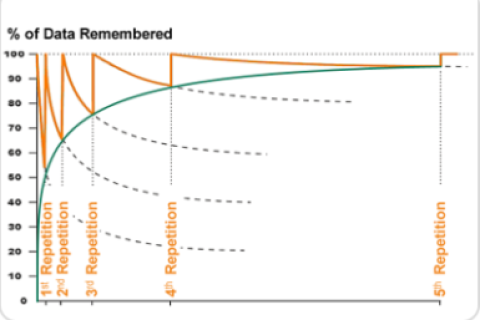Skills booster: Effective note-taking
Perhaps you do it too: typing or writing at lightning speed during a lecture in order to note down everything that is said. You then have a fully documented lecture, but did you actually understand what the lecturer said? And what do you do with all those notes? They often stay on your desk until the exam is due. Probably not much of what is written on paper will look familiar to you by then. Luckily, there is a way to take better notes: the Cornell note-taking method.
The Cornell note-taking method is a way of taking notes where you try to write down less on the one hand and learn more on the other hand.
How do the 'Cornell notes' work?

First, divide a piece of paper into three parts, as shown in the figure on the right (or download the template using the button below). It is recommended to write the subject and date at the top of your notes, but this part is not really part of the Cornell note.
During the lecture, you write down important information on the right-hand side in short sentences. These are your actual notes. Immediately after the lecture, you write down questions about those notes on the left-hand side. The next day, you write down the main idea of the topic (preferably from memory) at the bottom.
How to use your 'Cornell notes'?

After a few days, you will probably have forgotten much of what was covered in the lecture (don't worry, it is quite natural for us to forget things and this generally happens rather quickly). Therefore, it is important to repeat the material. After each repetition, you will remember the material better. In practice, this means that you regularly take out your Cornell notes and rehearse yourself using the questions in the left-hand column.
So, during a course, you assemble a pile of Cornell notes with which you regularly quiz yourself. By rehearsing you get a good idea of the subjects you are good at and the ones you need to practise more or study more thoroughly. For some notes, you can answer 80% of the questions, for others maybe only 40%. You can use that information when studying. Spend more time brushing up on the subject that you don't know that well yet. That way, you will study effectively (repeatedly rehearsing your questions) and efficiently (making good use of your time)!
More tips
Looking for more writing and studying techniques you can implement right away? Check out the overview of all tips and knowledge clips.
The Skills Boosters are brought to you by: Educational Development & Training, Skills Lab and the National Programme for Education (NPO).

